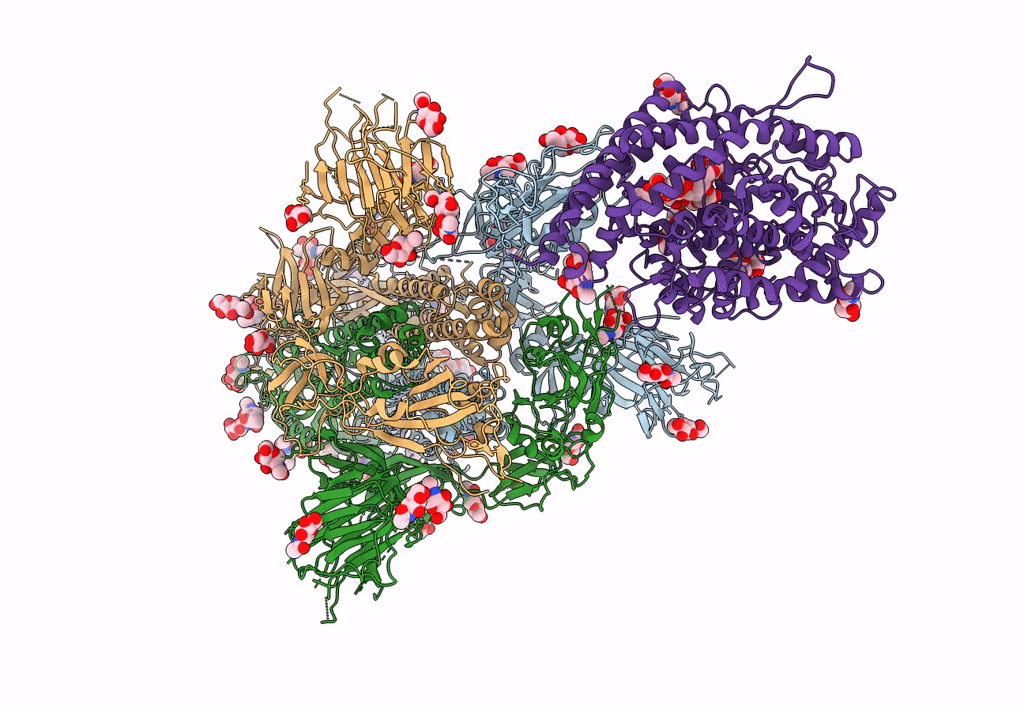
Deposition Date
2023-03-13
Release Date
2023-05-24
Last Version Date
2024-10-23
Entry Detail
PDB ID:
8IOU
Keywords:
Title:
Structure of SARS-CoV-2 XBB.1 spike glycoprotein in complex with ACE2 (1-up state)
Biological Source:
Source Organism:
Severe acute respiratory syndrome coronavirus 2 (Taxon ID: 2697049)
Homo sapiens (Taxon ID: 9606)
Homo sapiens (Taxon ID: 9606)
Host Organism:
Method Details:
Experimental Method:
Resolution:
3.18 Å
Aggregation State:
PARTICLE
Reconstruction Method:
SINGLE PARTICLE


